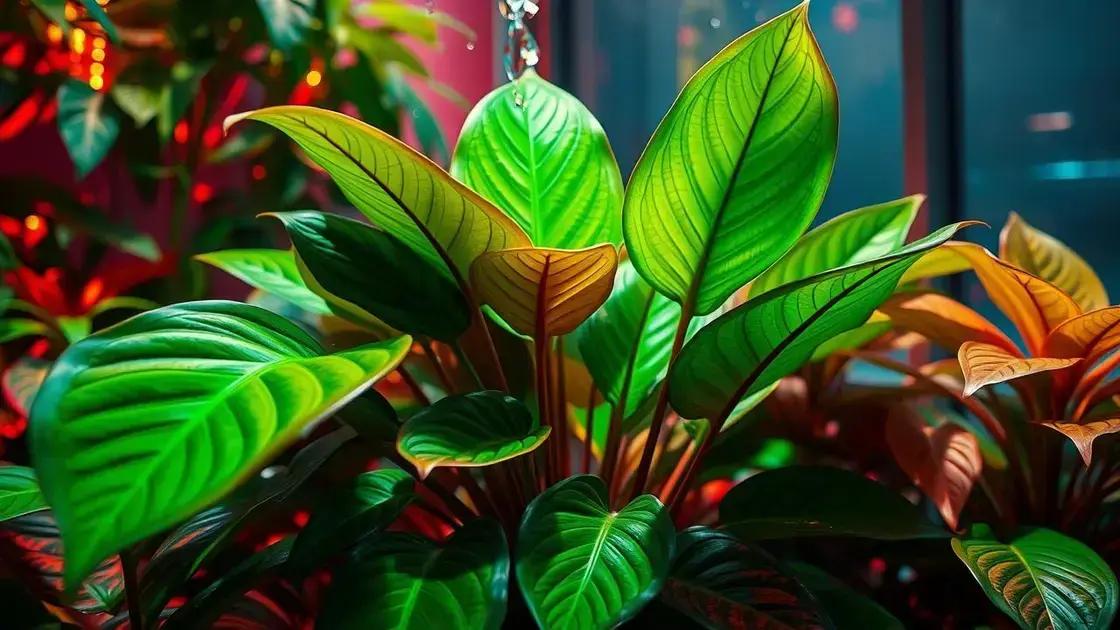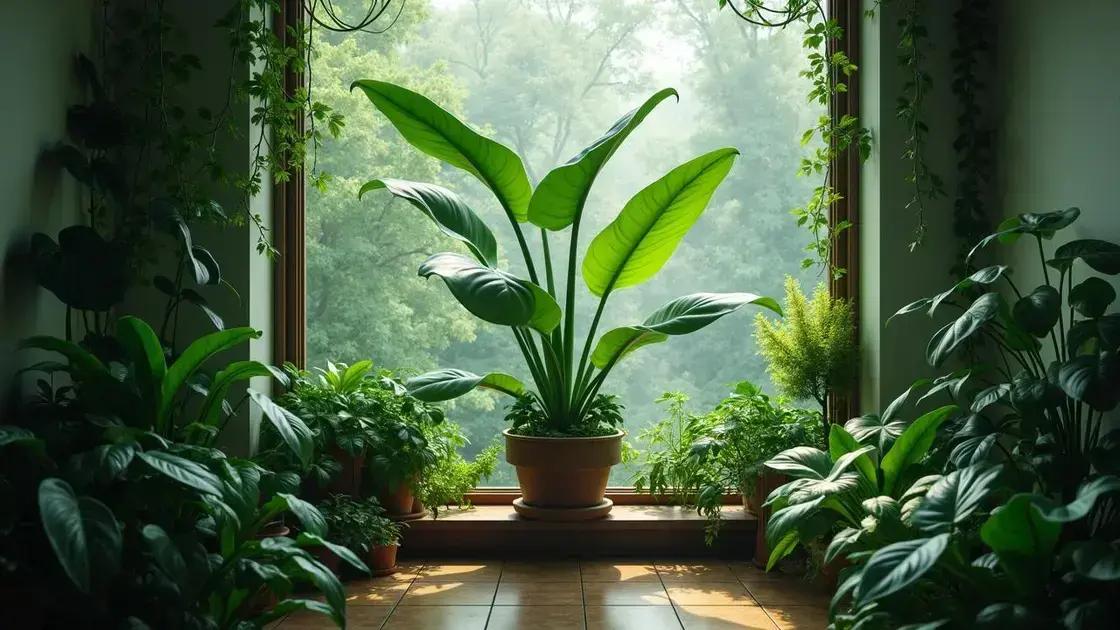How to Take Care of a Philodendron Plant: 5 Essential Tips for Success
How to take care of a philodendron plant can be a delightful journey for indoor plant enthusiasts. With their lush foliage and vibrant colors, philodendrons can transform your living space into a green sanctuary. However, knowing the right care practices is essential to ensure they thrive. Let’s explore a few key aspects that will help your philodendron flourish.
Table of Contents
ToggleUnderstanding philodendron light requirements
Understanding philodendron light requirements is essential for your plant’s health and growth. Philodendrons thrive best in indirect sunlight, mimicking their natural habitat under larger trees. Providing the right lighting conditions ensures your philodendron remains vibrant and lush. Let’s explore key aspects of lighting that cater to this beautiful indoor plant.
Optimal light conditions for philodendrons
Philodendrons can adapt to various light levels, but understanding their preferences is crucial:
- Bright, indirect light: This is ideal for most philodendron varieties. Position them near a window but shielded from direct sun rays.
- Moderate light: Philodendrons can tolerate lower light for short periods, but growth may slow down.
- Avoid direct sunlight: Direct exposure can scorch their leaves and hinder growth.
Signs of inappropriate light exposure
Pay attention to your plant’s cues, which can indicate light issues:
- Yellowing leaves: May signify too much direct light or underwatering.
- Leggy growth: Indicates insufficient light. Your philodendron may stretch towards the light source.
- Brown leaf tips: Often a result of too little humidity or direct sunlight exposure.
Adjusting light conditions
To ensure your philodendron remains healthy, follow these suggestions for adjusting light:
- Rotate your plant every few weeks to promote even growth.
- Use sheer curtains to diffuse bright sunlight.
- Consider using grow lights if natural light is insufficient.
Common philodendron types and their light needs
| Philodendron Variety | Light Requirement |
|---|---|
| Heartleaf philodendron | Bright, indirect light |
| Split-leaf philodendron | Moderate to bright, indirect light |
| Philodendron selloum | Moderate light, avoid direct sun |
By understanding philodendron light requirements, you can create the perfect environment for healthy growth. If you are looking to delve deeper into the nuances of indoor gardening, consider exploring indoor gardening techniques to further enhance your plant care skills.
Watering tips for a healthy philodendron

Watering tips for a healthy philodendron are crucial for keeping your plant vibrant and thriving. The philodendron plant enjoys a balance of moisture but is susceptible to overwatering. Knowing when and how to water can dramatically affect its health. Here are some effective strategies to ensure your philodendron receives the right amount of water.
Understanding the watering needs
Philodendrons prefer well-draining soil that stays moist but not soggy. Here’s how to determine your plant’s watering needs:
- Check the topsoil: Always feel the top 1-2 inches of soil. If it feels dry, it’s time to water.
- Seasonal adjustments: In the growing season (spring and summer), philodendrons may require more frequent watering compared to the dormant period (fall and winter).
- Humidity levels: Higher humidity can reduce watering frequency, as moisture is retained more effectively.
Effective watering techniques
Implement these techniques for optimal watering:
- Water thoroughly: When watering, ensure that water saturates the entire root ball and drains from the bottom of the pot.
- Use room temperature water: Cold water can shock the plant, so it’s best to use water that’s at a moderate temperature.
- Avoid waterlogging: Always ensure that your pot has proper drainage holes to prevent excess water from accumulating.
Signs of overwatering or underwatering
Keeping an eye on your plant’s symptoms can help you avoid common watering mistakes:
- Yellowing leaves often indicate overwatering, while dry leaf edges may suggest underwatering.
- Leggy growth can be a sign that your plant isn’t receiving enough water or light.
Watering schedule recommendations
| Season | Watering Frequency |
|---|---|
| Spring/Summer | Every 1-2 weeks |
| Fall/Winter | Every 2-3 weeks |
By following these watering tips for a healthy philodendron, you can enhance your plant’s life significantly. If you want to learn more about keeping your plants healthy, check out exploring indoor gardening techniques.
Common pests and how to manage them effectively
Common pests and how to manage them effectively are vital topics for maintaining a healthy philodendron plant. A variety of pests can affect your beloved indoor greenery, and knowing how to identify and manage them can keep your philodendron thriving. Here’s what you need to know to protect your plant from common invaders.
Identifying common pests on philodendrons
Several pests are notorious for targeting philodendrons, each requiring different management strategies:
- Aphids: Small, soft-bodied insects that cluster on new growth.
- Spider mites: Tiny, spider-like creatures that thrive in dry conditions and cause leaf discoloration.
- Mealybugs: White, fluffy insects that tend to hide in leaf axils, sucking sap from the plant.
- Scale: Hard, brown bumps on stems and leaves that can cause yellowing and leaf drop.
Effective management strategies
Proper management of these pests can be achieved through various methods:
- Regular inspection: Routinely check your philodendron for any signs of pests. Early detection is key.
- Neem oil treatment: This natural pesticide can effectively eliminate soft-bodied pests without harming the plant.
- Insecticidal soap: Spraying your plant with insecticidal soap can help suffocate pests like aphids and mealybugs.
- Quarantine new plants: Before adding new plants to your collection, keep them separate for a few weeks to ensure they are pest-free.
Preventive measures to avoid pest infestations
Taking proactive steps can help reduce the likelihood of pest problems:
- Maintain proper humidity levels, as many pests thrive in dry conditions.
- Ensure good air circulation around your plants to discourage pest development.
- Keep leaves clean by wiping them with a damp cloth to remove dust and potential eggs.
When to seek professional help
If your philodendron is experiencing a severe infestation despite your best efforts, it may be time to consult with a professional. They can provide specialized advice and treatment options to protect your plant.
By understanding common pests and how to manage them effectively, you can ensure your philodendron remains healthy and vibrant. To expand your knowledge further, consider exploring indoor gardening techniques for additional tips and guidance.
In conclusion
Caring for your philodendron involves understanding its specific needs, including light requirements, watering tips, and pest management strategies. By providing the right environment and regularly inspecting your plant, you can ensure its health and vibrancy. Don’t forget to explore additional resources to enhance your skills. For more valuable information, check out tips on enhancing your indoor garden.

